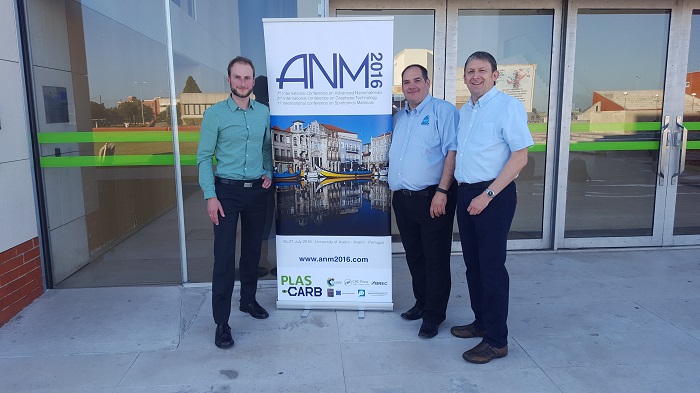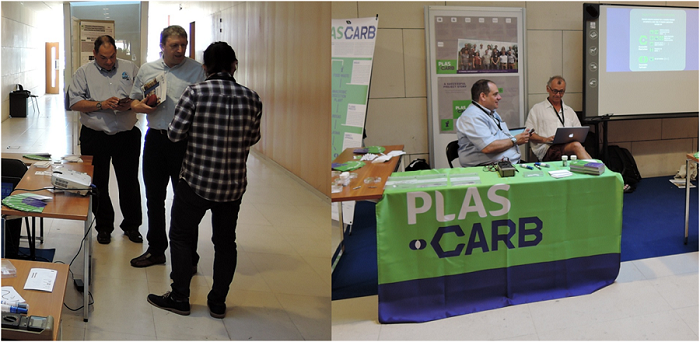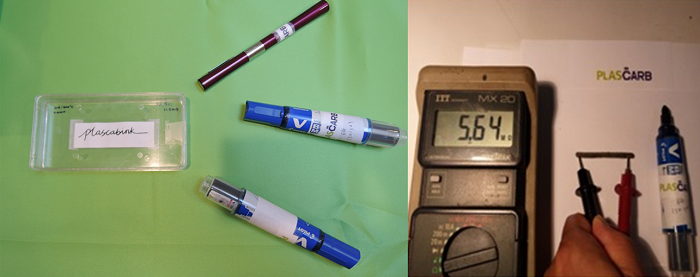PlasCarb goes to Industry - Exhibiting at the ANM 2016
PlasCarb was presented with an exhibition stand at the ANM2016 - 7th international conference on Advanced Nanomaterials from the 25th -27th July in Aveiro, Portugal. The three-years project is to conclude in November 2016. Partners of the consortium can look back on a wide range of activities as well as results achieved which have been presented at this conference.

Over the three days of the conference PlasCarb's partners offered interested visitors a wealth of informative and interactive materials, personal discussions as well as two oral conference presentations about ongoing research ventures.
Visitors had the chance to receive first hand information about PlasCarb, its progress and results to-date not only through slide shows and the information fact
sheets but also through personal discussions with our experts.

Renewable PlasCarbon (RPC) is one of these products, generated by the PlasCarb technology through the cleavage of biogas which is derived by anaerobic digestion from food waste. RPC is produced from a renewable resource (waste) and has the potential to compete against conventional carbon products from fossil origin in a sustainable (environmentally and socio-economically) way and is now being tested in a range of industrial applications.
The exhibition samples, with RPC as the basis for materials like conductive inks, rubber, or filaments for 3D printing, arrived freshly from the scientific laboratories of the PlasCarb partners CNRS (FR) and Abalonyx (NO). Moreover, a variety of exhibition samples from PlasCarb's products where presented.
Interested visitors could investigate the samples directly at the PlasCarb booth and observe the outstanding properties of RPC. Visitors could probe pens containing conductive ink based on RPC.

Any hand-writing could be tested on electric conductivity by simply applying a voltage on either end of the drawn line. The conductivity of the ink became apparent through visualization on the display of a multimeter.
With these and other illustrations at the PlasCarb booth, the consortium partners highlighted the results and achievements of the project on the one hand. On the other hand, they seek to set up contacts for potential future collaboration with interested people in follow-on research and development as well as commercialization of the PlasCarb technology.




